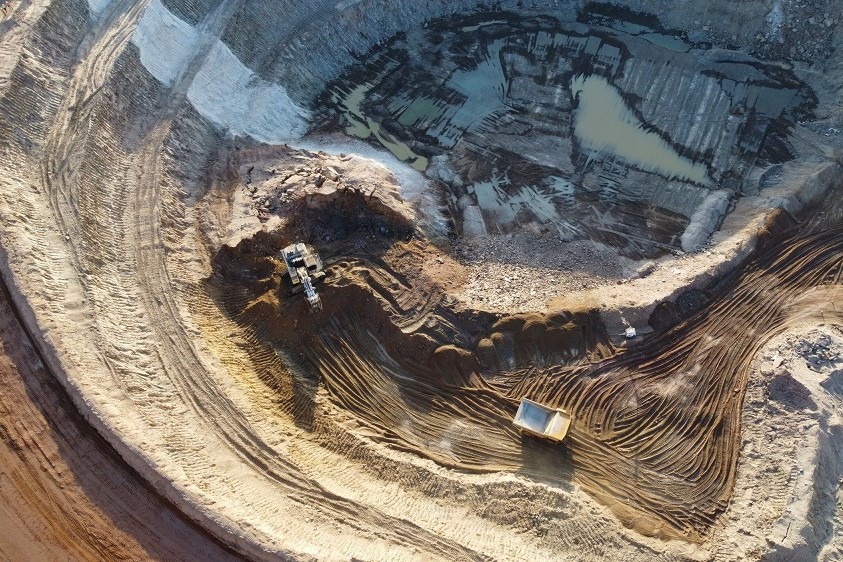
Rare, valuable and with unpronounceable names like praseodymium, critical minerals are the foundations of the technologies on which much modern life depends. Packed into the circuit boards of our smartphones and tablets are chemical elements and rare earths at the heart of a tightening environmental and geoeconomic race. It is one that Australia and its partners are well placed not only to compete in, but to win.
This new gold rush is driven by the global climate-change target to reach net-zero emissions by 2050. To succeed, the world needs vastly more electric vehicles, batteries, permanent magnets, wind turbines, solar photovoltaics, hydrogen electrolysers and energy-efficient technologies. The critical minerals that are core components of all these technologies are central to the energy transition.
Demand for these minerals is booming and is set to quadruple by 2040. An additional 50 new lithium mines, 60 new nickel mines and 17 new cobalt mines will be needed to meet the 2050 target. This is great news for Australia since we have some of the world’s largest recoverable reserves of critical minerals, with 81 major projects underway worth up to $42 billion.
Modelling in the government’s 2023 critical minerals strategy projects that global demand for critical resources could add $71.2 billion in GDP to the Australian economy and create an extra 115,100 jobs by 2040. Those figures soar to $133.5 billion and 262,600 jobs if we capture a larger share of refining and processing in Australia. That’s a serious economic opportunity.
An equally strong national security imperative for exploiting Australia’s abundance of critical minerals is their use in sensitive defence technologies. As a recent ASPI report by Ben Halton and Kim Beazley noted, 3,000 items of US military equipment, almost every weapon used in Ukraine, and ‘every fighter jet, navy vessel and nuclear weapon on Earth’ relies on rare earths, and there are few known substitutes.
Their vulnerability to supply-chain shocks is part of what makes minerals ‘critical’, according to Geoscience Australia, which is a concern because of the heavy concentration of the market around a single buyer. China controls 94% of the world’s supply of rare earths and therefore largely controls the price of these and other minerals.
Because of its central role in minerals processing, China dominates Australia’s exports. Last year, for example, China bought 96% of our spodumene, up 28.5% from 2021. But there are few alternatives to the Chinese market. Incredibly, as Halton and Beazley explain, Western Australia’s Japan-backed Lynas Rare Earths is the only producer in the world that is independent of China’s supply chains.
Diversification is a costly endeavour. It would take $1 billion to build a new processing plant in Australia. But there are plenty of opportunities for project proponents, including financing under the $2 billion Critical Minerals Facility through Export Finance Australia. Another $4 billion is available for resources and renewables through the National Reconstruction Fund and $500 million will be available through the Northern Australia Infrastructure Fund.
Northern Australia has an important role to play in securing Australia’s and our partners’ critical-mineral supply chains, with its hosting of a large number of deposits. While the 2023 strategy did not expand the critical minerals list, it established a process to update the list. This is important for the Northern Territory, which has a large number of deposits of minerals that are not all captured by the current list.
Critical minerals opportunities abound in the Northern Territory. Arafura Rare Earth’s Nolans project, for example, could supply 10% of the world’s demand for the metals used in rare-earth magnets. A $1.5 billion Commonwealth investment in the planned Middle Arm sustainable development precinct will boost Darwin’s role in manufacturing and exporting critical minerals as well as hydrogen.
Well-designed government interventions are crucial to de-risk investment, encourage private-sector funding and attract trusted foreign investment. The government has a role to play, as we’ve seen with the Quad’s growing engagement in clean energy and with the ambitious Climate, Critical Minerals and Clean Energy Transformation Compact that made securing minerals supply chains a US alliance objective.
Australia needs to continue to bolster its engagement with close partners. Halton and Beazley propose making critical minerals core to the AUKUS partnership with the US and UK. They call for AUKUS to quantify needs for each mineral, map foreign ownership, co-invest up to US$5 billion in projects, and even become ‘the supreme central command of allied effort to diversify critical-minerals supply’.
Australia can win the critical-minerals race by strengthening its supply chains, capturing a larger share of downstream processing and supplying emerging markets and trusted partners like the US, UK, Japan, Korea, India and the EU. Fortunately, Australia’s unmatched geological richness, mining expertise and good business practices make us a partner of choice on critical minerals.

